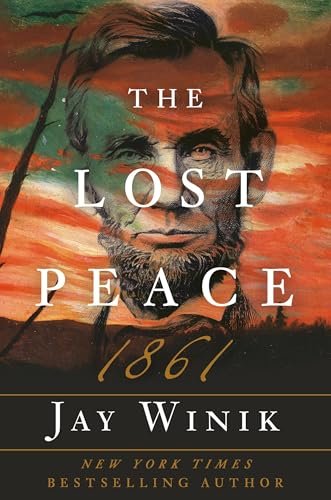
Book Review of 1861: The Lost Peace
A Journey Through Tensions: My Thoughts on 1861: The Lost Peace by Jay Winik
As a history buff with a particular interest in the Civil War era, I found myself drawn to Jay Winik’s 1861: The Lost Peace. The title sparked curiosity, inviting reflection on that elusive state of harmony before the storm—was it truly within reach, or merely a fantasy? Winik, known for his engaging storytelling, pulled me in with his promise of a narrative steeped in drama and tension rather than a dry recounting of historical facts.
From the outset, Winik’s narrative style feels vibrant and engrossing. Instead of a chronological retelling, he weaves a tapestry of characters and pivotal moments that shaped the pre-war landscape. The book is rich with familiar figures like John Brown and Stephen Douglas, yet it doesn’t shy away from lesser-known souls, like the enslaved Silas Jackson, whose early presence raised my hopes for an impactful contribution. Unfortunately, he vanished into the background, which left me yearning for more depth on secondary characters who could have added nuance to the overarching narrative.
One of the most striking aspects of 1861: The Lost Peace is its pacing. The chapters are short, almost like snippets in a dynamic conversation, keeping the momentum high and the reader engaged. Winik excels at crafting vivid imagery that brings the antebellum period to life—sounds, sights, and emotions leap off the page. His descriptive flair made me feel as though I were walking through a bustling marketplace in the North or feeling the oppressive heat of a Southern summer day.
However, as engrossing as the journey is, I struggled with aspects of the destination. Winik suggests that the title reflects a “lost” opportunity for peace, but I found myself questioning whether such peace ever genuinely existed. The proposed compromises, such as the Crittenden Compromise and the Corwin Amendment, felt more like desperate measures than feasible solutions. Winik’s depiction of Lincoln’s stances on slavery also warrants scrutiny. At times, I felt the characterization of Lincoln was oversimplified, reducing complex motivations to mere political maneuvering—leaving me craving a more layered understanding of his convictions.
As I turned the final pages, I sensed that Winik’s emphasis on this “lost peace” could be construed as a lament—for a peace that never fully took root and for a war that became inevitable. The epilogue, reiterating the phrase “lost peace” multiple times, left me wondering if the author was mourning that which never was or celebrating the resolution that came from conflict. This tension between lament and acceptance added an intriguing layer to my reading experience.
While I may not walk away with any groundbreaking new insights about the start of the Civil War—Winik himself admits that the facts are scarce—his recounting provided an engaging narrative that felt relevant and, at times, haunting. 1861: The Lost Peace is a well-crafted introduction for newcomers to the Civil War era, especially those who appreciate a novelistic approach to history.
For history enthusiasts, casual readers, or anyone interested in the tangled roots of American conflict, this book offers a captivating journey. I may not agree fully with Winik’s thesis, but the ride was worth it. If nothing else, it left me pondering the intricate dance of politics, human ambition, and the quest for peace—a dance that remains as relevant today as it was in 1861.






